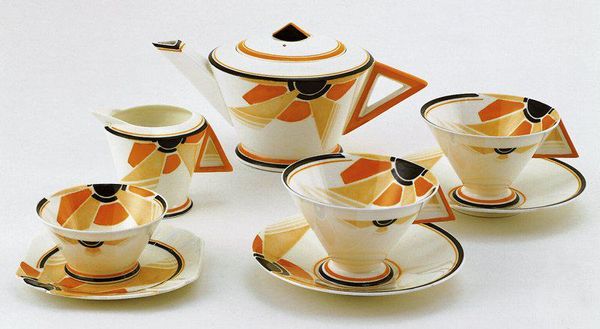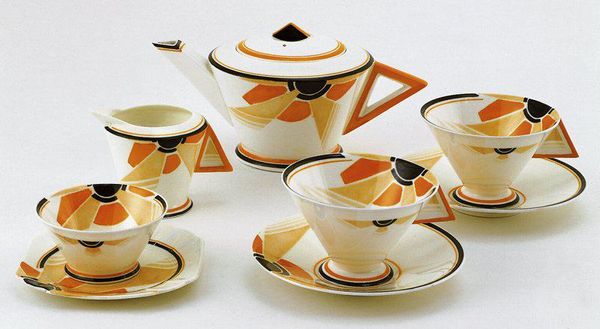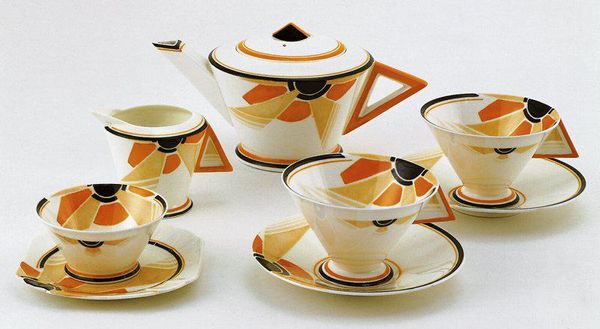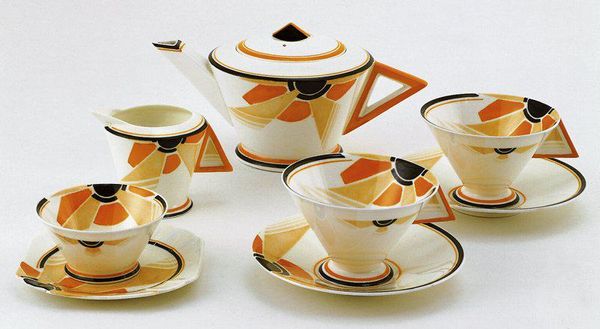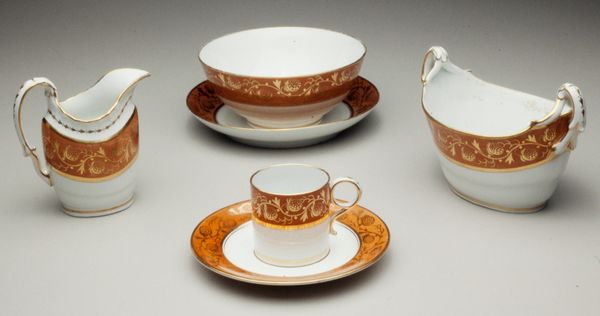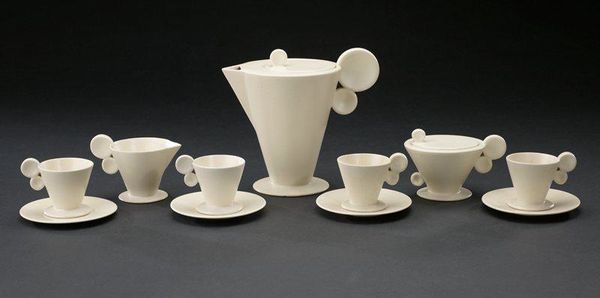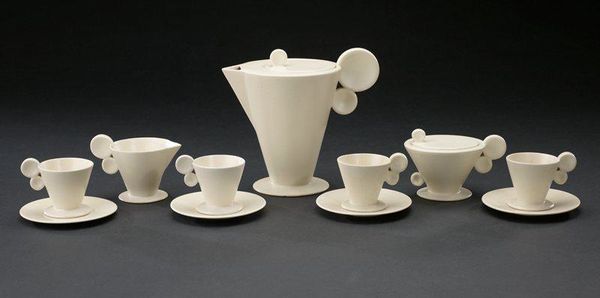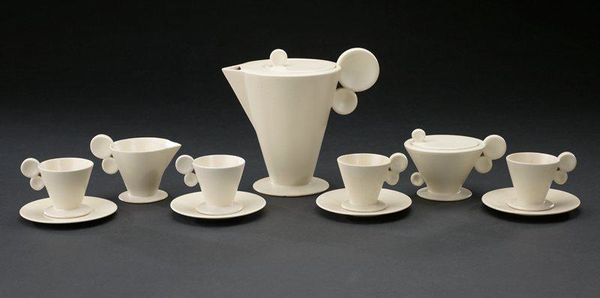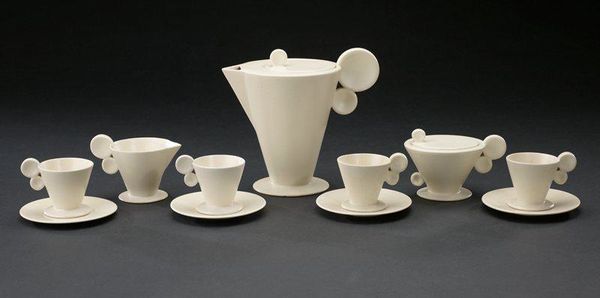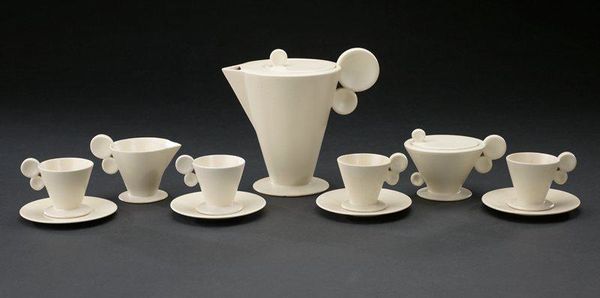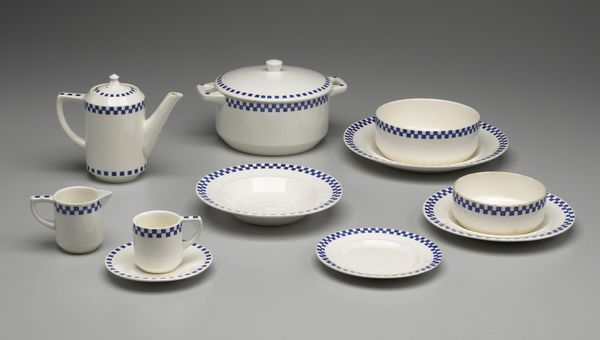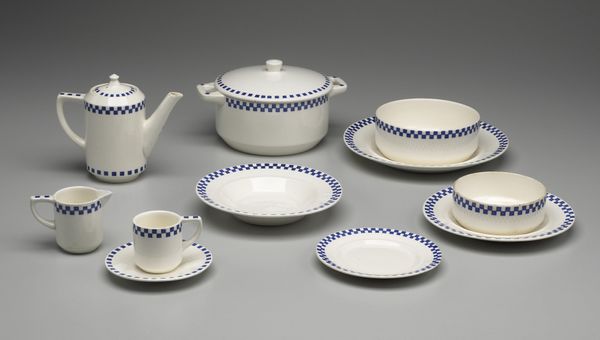
ceramic, porcelain
#
art-deco
#
pottery
#
ceramic
#
porcelain
#
ceramic
#
decorative-art
Dimensions: 1 3/4 x 3 3/8 x 3 3/8 in. (4.45 x 8.57 x 8.57 cm)
Copyright: No Copyright - United States
Curator: Well, hello there! What’s your take on this fabulous Art Deco tea service? There is such an optimistic sense of streamlining! Editor: Optimistic indeed! But look closer; it feels like a carefully constructed image of affluence, right? This service speaks to the burgeoning middle class, yearning for status symbols during the interwar period. Curator: Absolutely. This porcelain "Tea for Two" set was crafted by Eric Slater around 1930. The factory would have relied on repetitive labor processes, carefully staged and distributed. It’s more than just decorative art. It's a statement of manufactured modernity. Editor: Slater's geometric shapes are a perfect encapsulation of that moment, mimicking industrial aesthetics within the domestic sphere. It evokes power structures inherent in capitalist consumption... Do you suppose the angular handles and sharp edges are meant to signify something other than utility? Curator: Perhaps it's more about adapting design to the technical processes involved in ceramic production at the time. Transfer printing, for example, allowed for these crisp, repeating patterns efficiently. Editor: Agreed! The materials, combined with the streamlined geometric style and repeated color blocks—black, tangerine and pale beige—all signal luxury while actually reflecting more democratized production and consumption channels. Tea time was becoming increasingly accessible, regardless of class and rank. Curator: Absolutely! And beyond democratization, you can really see how the material composition directly facilitated Art Deco style's mass appeal and widespread cultural influence! Editor: Which circles back to the point of manufacturing an image! These designs told a story: accessible elegance! A brave new world facilitated by modern manufacturing—right? This is more than tableware. It embodies the visual and ideological aspirations of its era, playing to emerging social mores. Curator: Looking at the sugar bowl from this angle now, I must admit it truly highlights how social shifts shaped design imperatives and techniques. Editor: Precisely. Viewing art in isolation does little service to understanding the depth of the impact from production design that defines it.
Comments
No comments
Be the first to comment and join the conversation on the ultimate creative platform.
